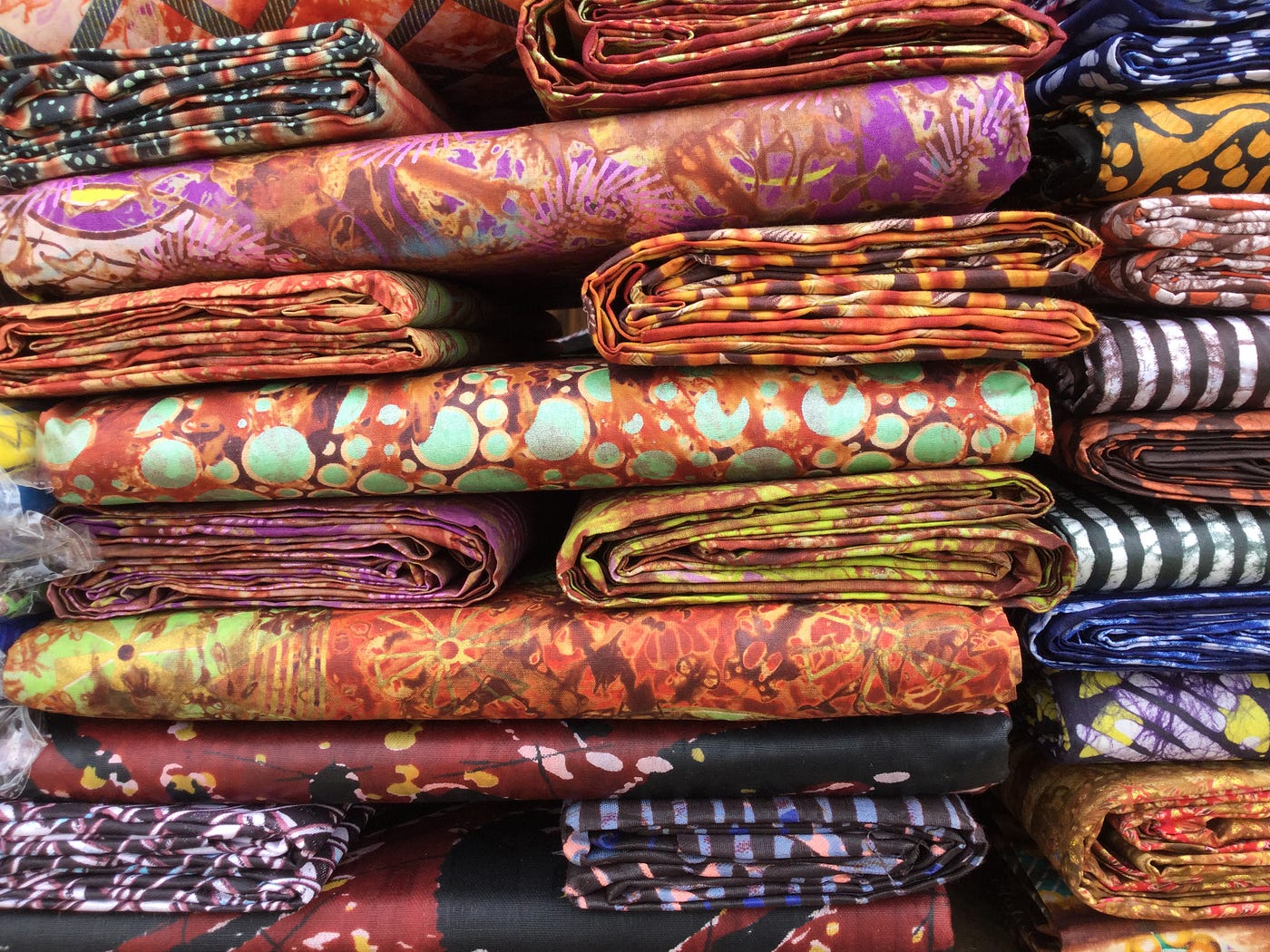
African fashion is a powerful mix of colour, culture, and craftsmanship, and at the heart of it all are the fabrics. From Ghana to Nigeria, Mali to South Africa, each region offers unique textiles with deep stories woven into every thread.
Here’s a quick guide to some of the most iconic African fabrics, what makes them special, and how they’re worn today.
1. Ankara (West Africa)

Also known as African wax print, Ankara is bold, colourful, and globally recognised.
Origin: Industrial wax print process brought by the Dutch, embraced and transformed in West Africa, especially Nigeria and Ghana.
Features:
- Bright colours and geometric or symbolic patterns
- 100% cotton, breathable and durable
- Often used for everyday wear, weddings, or matching family sets
How it’s worn: Headwraps, dresses, suits, corsets, bags—even sneakers!
2. Kente (Ghana)
Kente is one of the most prestigious and symbolic fabrics in African culture.
Origin: Ghana, particularly the Ashanti and Ewe people.
Features:
- Handwoven strips of silk and cotton
- Patterns carry meanings: royalty, wisdom, wealth, love
- Traditionally worn on special occasions and rites of passage
How it’s worn: Robes, sashes, shawls, stoles (especially during graduations and weddings)
3. Adire (Nigeria)

Adire is Nigeria’s version of tie-dye, traditionally created by Yoruba women.
Origin: Southwestern Nigeria, especially Abeokuta.
Features:
- Indigo-dyed cotton with resist-dye techniques
- Unique, hand-drawn or stitched patterns
- Symbolic motifs that tell stories or represent proverbs
How it’s worn: Flowy dresses, boubous, skirts, and shirts—perfect for relaxed elegance.
4. Bogolanfini / Mud Cloth (Mali)
This handmade textile is as artistic as it is cultural.
Origin: Mali, made by the Bambara people.
Features:
- Handwoven cotton dyed with fermented mud
- Earth tones (black, brown, cream)
- Geometric symbols with spiritual or historic meanings
How it’s worn: Jackets, tunics, home decor (pillows, wall hangings), and high-fashion streetwear.
5. Shweshwe (Southern Africa)
Known as the “denim” of South Africa, Shweshwe is a printed cotton fabric with roots in both African and European traditions.
Origin: South Africa and Lesotho, with a mix of indigenous and colonial influence.
Features:
- Geometric, floral, or dot-based designs in indigo, brown, and red
- Known for its stiff texture and distinctive smell when new
- Popular in weddings, traditional celebrations, and contemporary designs
How it’s worn: Structured skirts, peplum tops, matching sets, or dresses.
6. Bògòlanfini (Ivory Coast variation)

While Mali’s mud cloth is more famous, neighbouring countries like Côte d’Ivoire have their version with added flair and storytelling elements.
Features:
- More colourful adaptations
- Used for both spiritual rituals and fashion-forward interpretations
Final Thoughts
African fabrics are more than just materials—they’re expressions of identity, culture, and artistry. Whether hand-dyed, printed, or woven, each piece tells a story of the people who made it and the traditions it carries.
So next time you pick out a bold Ankara dress or admire a Kente stole, know you’re wearing history with style.
Let’s Chat!
Which of these fabrics is your favorite—or totally new to you? Drop a comment and let’s celebrate the beauty of African textiles together. 🌍👗